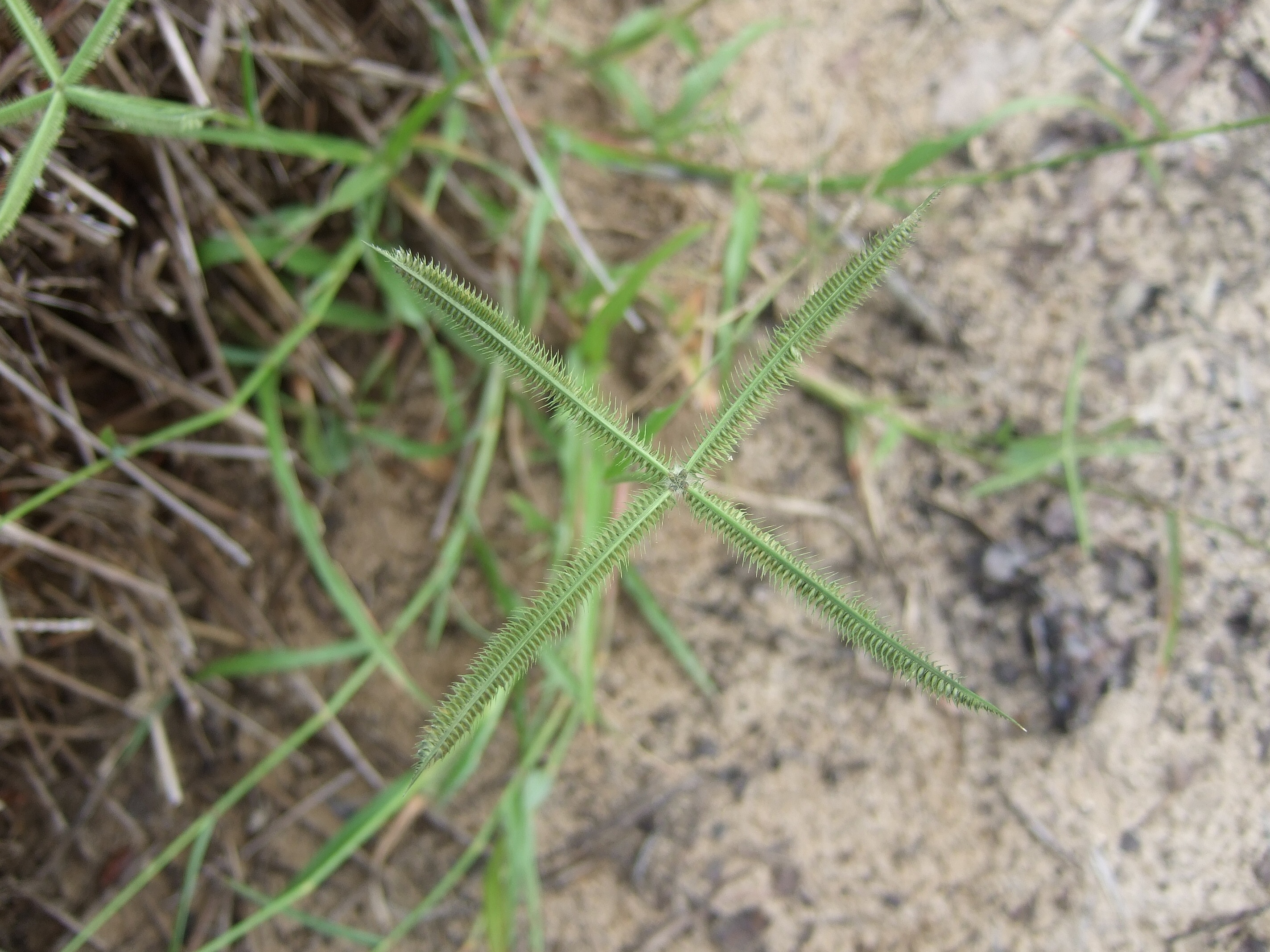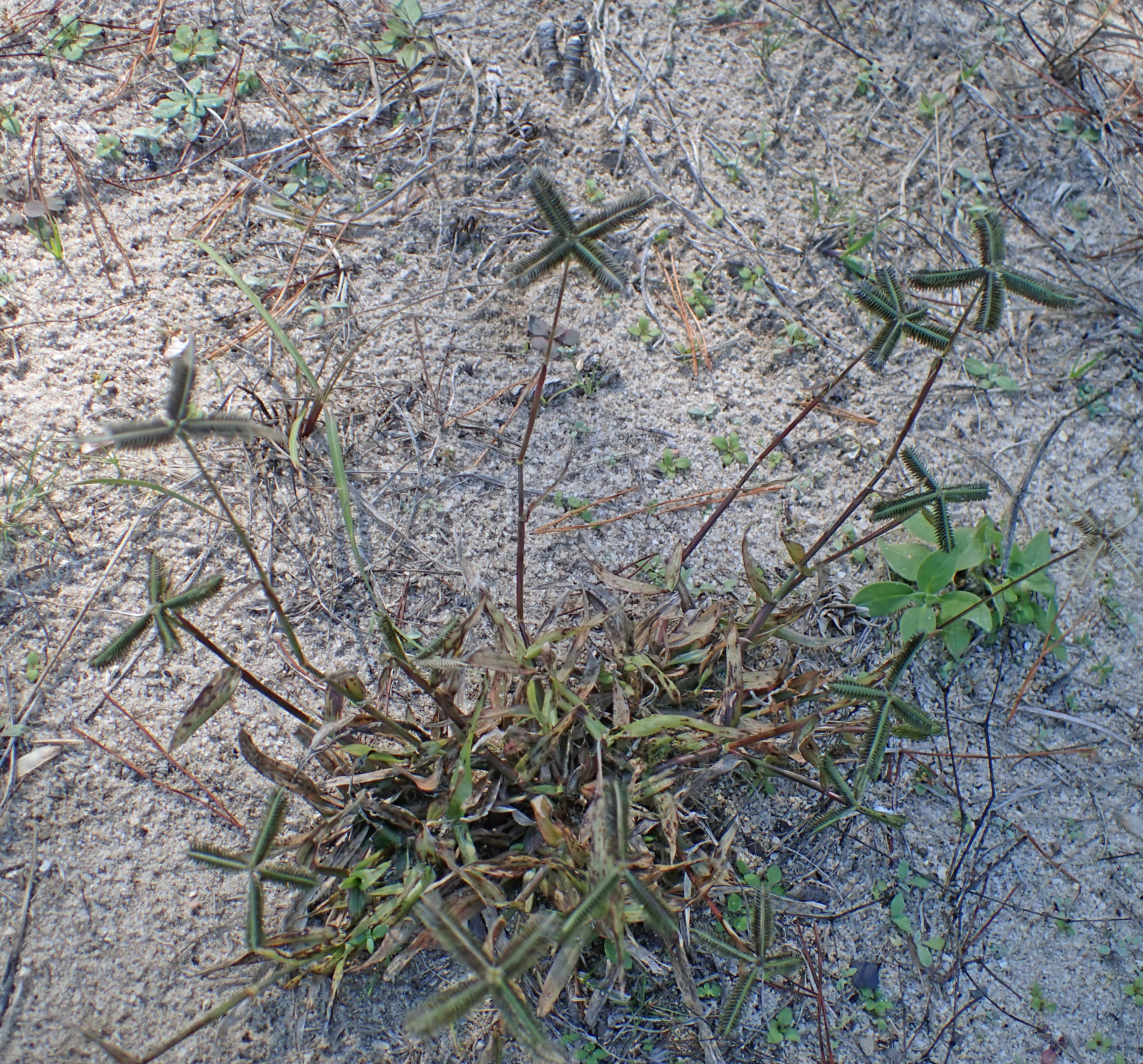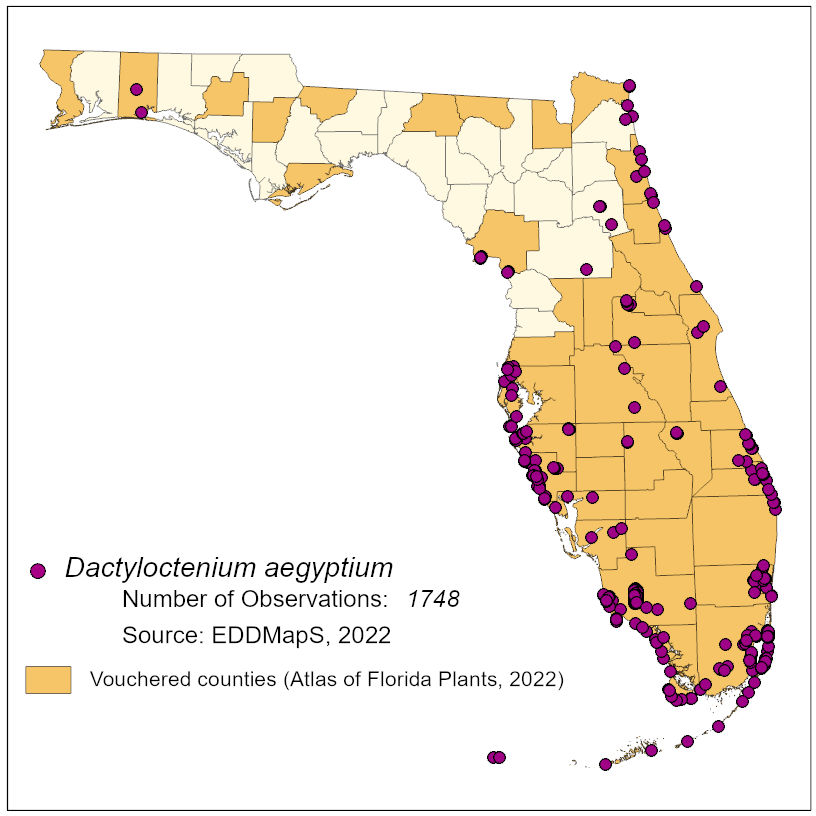Common Name: Durban crowfootgrass
Family: Poaceae
Common Synonyms: Cynosurus aegyptius
USDA Hardiness Zone: 5a-11
Growth Habit: Graminoid
Origin: South America
FISC Category: 2
FDACS Listed Noxious Weed: No
Introduction Date: 1985
IFAS Assessment:


Durban crowfootgrass was named after the flower and fruit resemblace to a crows foot. It is an annual weedy grass found throughout Florida. The seedhead is formed by 3 to 5 spikelets that radiate from a center point, resembling the crow's foot.
Disturbed areas
Stems bend and root at lower nodes and form mats. Seeds have been used medicinally.

NA
NCSU, Turf and Weed ID - Dactyloctenium aegyptium. http://turfid.ncsu.edu/csPagedPdField.aspx?PlantID=DTTAE. Accessed June 13, 2017.
Dave's Garden. PlantFiles: Egyptian grass, Dactyloctenium aegyptium. http://davesgarden.com/guides/pf/go/77866/#b. Accessed June 13, 2017.
Hyde, M.A., Wursten, B.T. and Ballings, P. 2014. Dactyloctenium aegyptium: Details. http://eol.org/data_objects/30275244. Accessed June 13, 2017.
Hall, D. W. 2019. Grasses of Florida. University Press of Florida, Gainesville, FL.